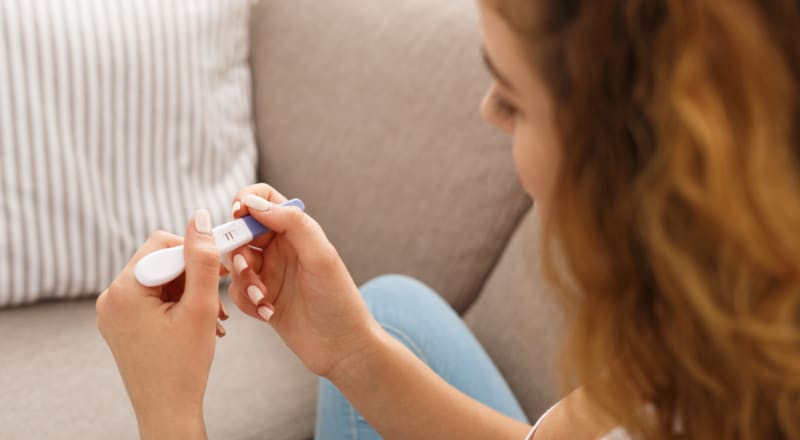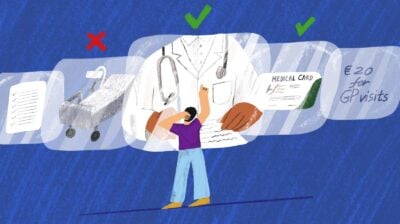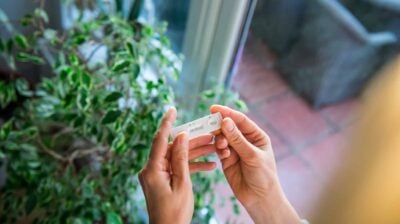How to take a home pregnancy test
Here are some guidelines on how and when to take a home pregnancy test to get the most accurate result

A home pregnancy test is a common way for people to find out if they are pregnant before they visit a doctor. If you get a positive result, or if you’re unsure about the result you’ve gotten, make an appointment to see your doctor.
Finding out you are pregnant can be an overwhelming experience. Find out what to do if you have an unplanned pregnancy.
How does a pregnancy test work?
Pregnancy tests are designed to detect the presence of the ‘pregnancy hormone’ called the human chorionic gonadotropin (hCG) in the blood or urine (pee). This hormone is released after an egg is fertilised by sperm and attaches itself to the uterus/womb wall. The hormone is usually released six days after fertilisation and continues to rise quickly, doubling every two to three days.
Home pregnancy tests are typically urine tests. However, doctors may use a blood test to test for pregnancy. Blood tests can detect pregnancy earlier than urine tests, but it takes longer to get results.
How do I use a home pregnancy test?
When you buy a home pregnancy test, it will come with instructions on how to use it. Make sure to read these instructions before taking the test. Here are some general guidelines you can follow:
Privacy
Taking a pregnancy test can be nerve-wracking no matter what result you are hoping for. Try and find somewhere you can privately take the test without being interrupted. Do whatever is most comfortable for you, so if you want to have a close friend or your partner on the other side of the door while you take the test, ask them to do so.
Open the test
Before you begin, take a few moments to read the instructions on how to take the test so you can get the most accurate result. If results are shown in symbols, try to familiarise yourself with them so you won’t be scrambling to find the leaflet after. Wash your hands and take the test stick out of the wrapper.
Take the test
You can either pee straight onto the stick or into a small cup, depending on the type of test. It is best to use a midstream sample, which means you should pee a small bit before you take the sample.
If you need to pee straight onto the stick, make sure you’ve read the instructions. Some pregnancy tests need you to hold the stick downwards in the stream (never upside down) and for a certain amount of seconds.
If you need to pee into a small cup, place the absorbent tip of the pregnancy test in the sample for the correct amount of seconds.
Now, you wait
It is recommended that you leave the pregnancy test laid flat on a clean surface, with the result window facing upwards. Results can take anywhere from 1 to 10 minutes to show.
Try to distract yourself while waiting for the result. Staring at it will only make the time go slower and cause you to feel more anxious.
Some pregnancy tests have a small clock or timer on the window of the test that shows it is working. If you don’t see it, your test may not be working properly and you will need to take another one.
Check your results
Once the correct amount of time has passed, check your pregnancy test stick for your results. If the test comes out positive, you should make a doctor’s appointment to confirm the pregnancy.
If the result is negative, wait another week and if your period still hasn’t arrived, do another test. False negatives are common if you have miscalculated and taken the test too soon. If the second test comes back negative, visit your doctor to see if there is another reason why you haven’t gotten your period.
Where can I get a home pregnancy test?
Home pregnancy tests are available without prescription in most pharmacies. Most cost around €10.
How accurate are home pregnancy tests?
In general, urine home pregnancy tests are 99% accurate.
However, the accuracy depends on how long after a missed period that the test is taken. Waiting about a week after a missed period gives you the most accurate result and it is recommended that the test be taken in the morning, when urine is more concentrated.
Other factors that can affect the accuracy of the test are:
- How closely the instructions are followed
- When you ovulate (your egg is released) in your cycle and when implantation happens
- The sensitivity of the pregnancy test
What if it is a positive result?
The next step after a positive result is to make an appointment to see your doctor. If you want to have a baby, your doctor will be able to advise you on what will happen next and can direct you towards more information and support.
If this is an unplanned pregnancy, you may be feeling a lot of emotions. Talk to someone you trust about what’s going on. What you decide to do next is your choice, and you should not feel pressured into any one decision about the pregnancy. Speaking to a professional pregnancy counsellor can also help you make sense of mixed or confused feelings and can help you to cope with an unplanned pregnancy. Here is a full list of unplanned pregnancy counselling services across the country.
You can call the HSE’s free, non-judgemental helpline, My Options, at 1800 828 010, or visit myoptions.ie for more information.






